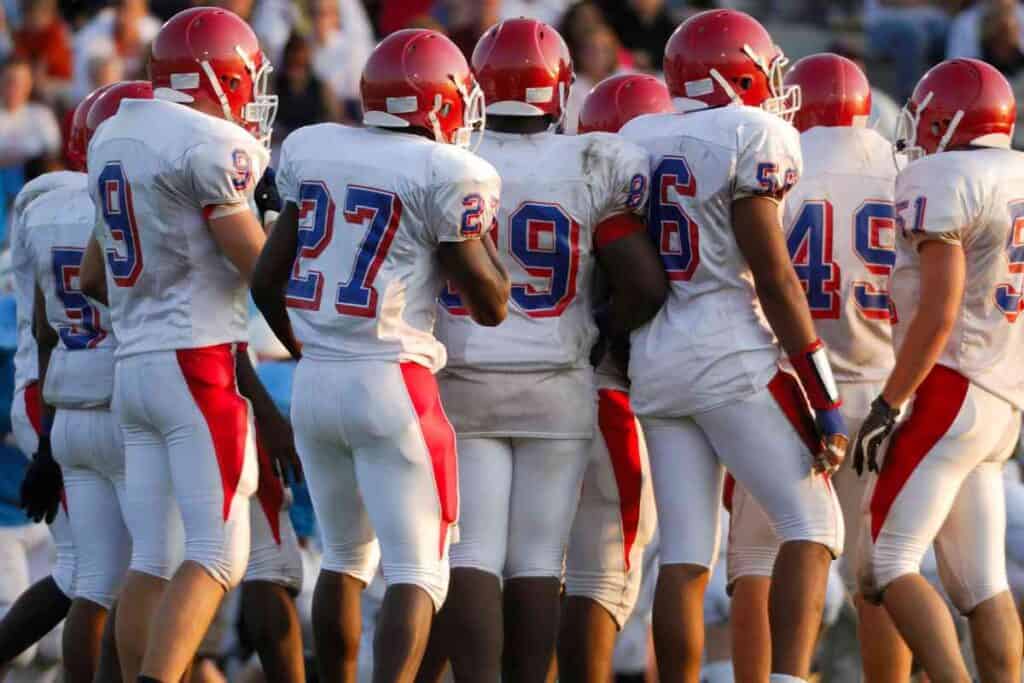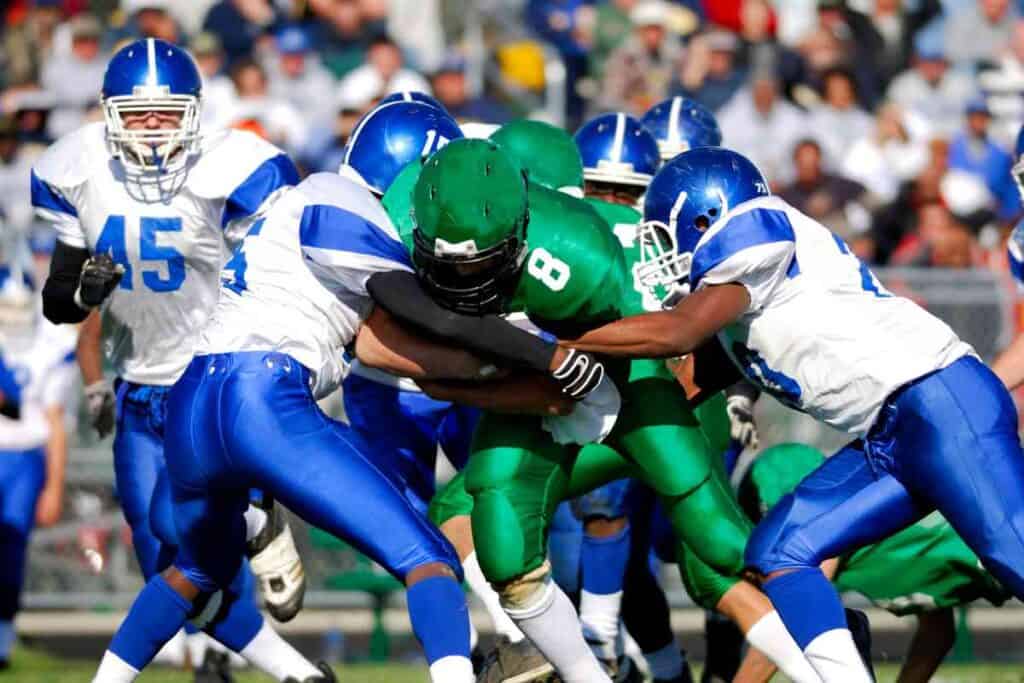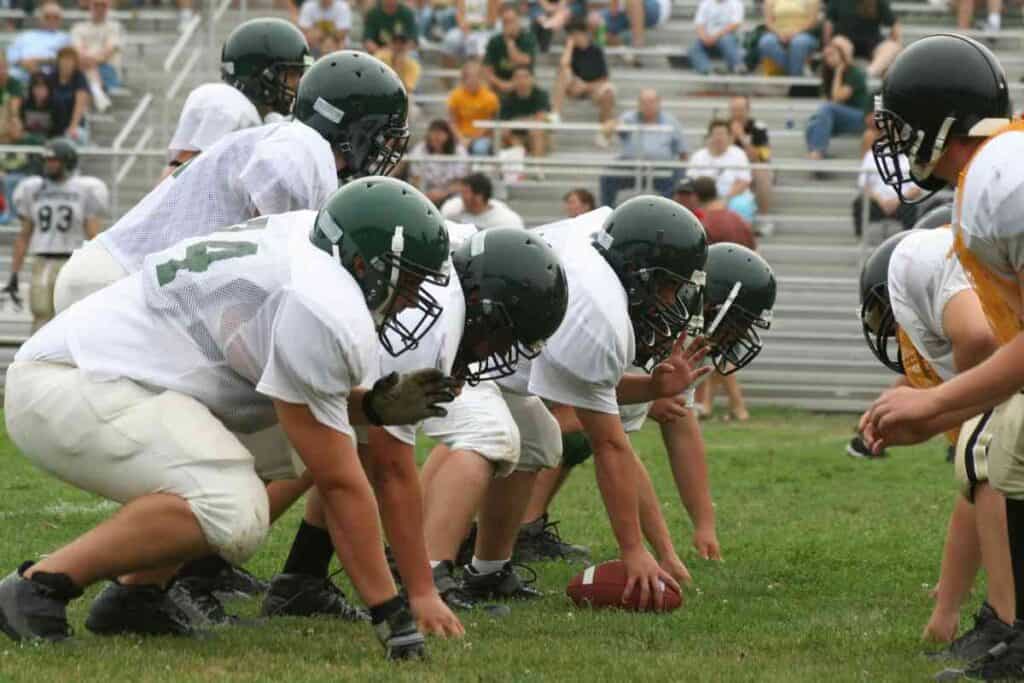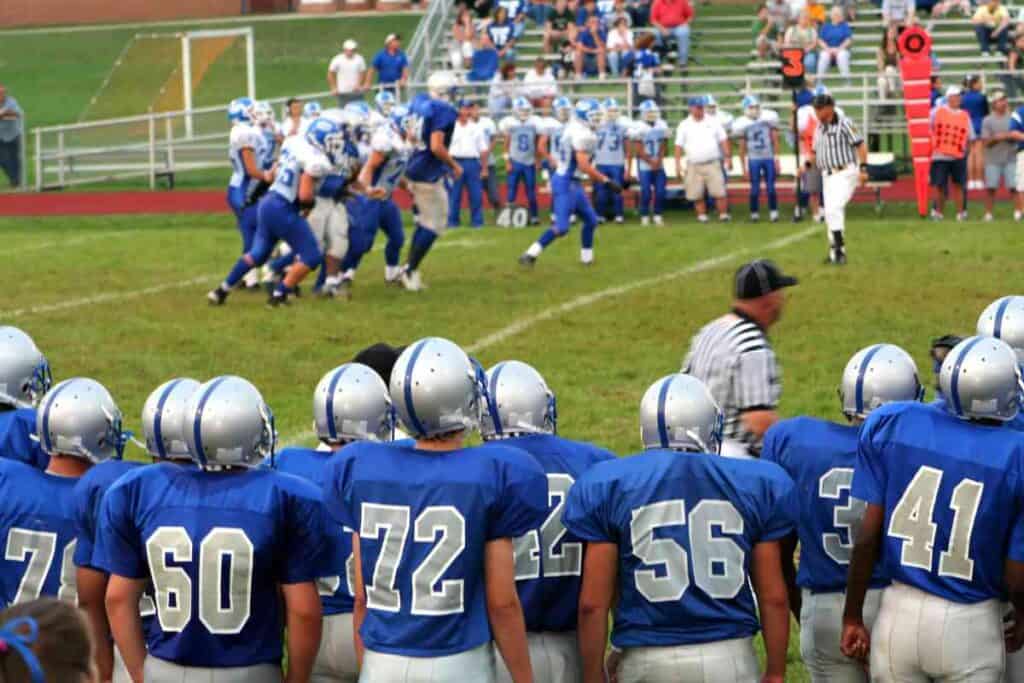10 Reasons Why The Clock Stops During High School Football Games
There are lots of rules to know about in football. For example, when does the play clock stop in high school football?

When does the clock stop in high school football?
The play clock at a high school football game is meant to stop for the following reasons:
- During a timeout
- When a quarter of football ends
- When the ball or ball carrier goes out of bounds
- After a penalty
- When a team scores
- When a player is injured
- When possession of the ball changes due to a turnover, point, or scoring play
- An incomplete pass
- A first down
- Measurement for a first down
We’ll review how the play clock operation works and clarify when the clock should be stopped. We’ll also discuss differences in college, NFL, and high school clock stoppages.
Reasons They Stop The Clock During High School Football Games
You can tell by watching football at any skill level that there are plenty of reasons to stop the clock.
Football is literally a timed game, so the rules that govern the time clock are well known and enforced by referees on the field. Let’s go over a few reasons why the clock would stop in a high school football game.

Timeouts
In a game of time, clock control is big. Timeouts are used to stop the play clock and give players and coaches a chance to talk
The end of a quarter
You probably know that a high school football quarter lasts 12 minutes. The clock stops, then the teams switch directions. The clock is restarted after switching.
Out of bounds
Another method of clock control: the clock stops when the ball carrier touches out of bounds before being tackled to the ground.
Post penalty
The clock is meant to stop after a penalty. Note that the clock will continue running if a coach declines the penalty.
On a score
Field goals, safeties, and touchdowns result in the clock stopping and the teams kicking off again.

On an injury
An injury results in the clock stopping temporarily while the injured player is tended to and off the field.
After a turnover or possession changes
A turnover, like an interception or a fumble, results in the clock stopping as the teams are allowed to transition from defense to offense. This also occurs if the ball is turned over on downs.
Incomplete Pass
If a receiver is unable to catch the football, the clock is stopped. This is another moment where clock strategy can be used to throw the ball away or intentionally dropped to avoid negative yardage or clock stoppage.
First down
When a play results in a first down, the clock is stopped.
Mercy rules
Mercy rules are unique to high school football and the result of skill differences between some schools – they can also be said to be in place in the interest of player health.
Mercy rules in high school can vary, but typically if a team is up by more than 35 in the second half of the game.
The clock will remain running unless a team scores, there is an injury, a team calls a timeout, or a penalty. Also, note that the clock will continue running even if the point difference falls below 35.
How are high school football clocks different from other levels?

You probably detected two differences between NFL football and high school just by reading the above rules.
First, the NFL doesn’t have a mercy rule – nor do they often need one. The other adjustment is on a first down.
In the NFL, a first down does not stop the clock from running. In high school, a first down does stop the clock from running.
Referee’s discretion
The head referee can also stop the clock for any rare scenario that might occur.
Examples of these are non-player people or animals on the field, issues with the field or turf itself, failure of equipment with a team, electrical problems with the light, or anything that might stop the flow of a safe, timed game.
If the play clock itself were to malfunction, the referee team would resort to using a manual play clock and communicate time to the teams.
How long does the play clock stop in a High School football game?
There are a variety of scenarios that cover how and when the play clock starts in high school football.
The timing is always either 40 seconds or 25 seconds, depending on whether or not anything like a penalty, injury, or out of bounds occurred in the previous play. The only times that are not truly predetermined are when any of the following occurs:
- A player loses their helmet
- A penalty is called
- A first down is being measured
- A double change of possession (i.e., a team intercepts the ball, but then fumbles and loses the return)
All of the above don’t have a specific play clock signal – and are determined by the referee.
The referee then communicates to the teams when the play clock has started or is about to start.
Key Takeaways
- There are a number of reasons for clock stoppage in high school football as the clock determines the timing of the game
- The major difference between high school and NFL is that high school football has a mercy rule to keep a running clock while the NFL does not. High school also stops for every first down.
- The head referee also might need to stop the clock for any variety of extra reasons, from field disruptions to administrative problems.
- The play clock is also important, and is set to either 25 seconds or 40 seconds depending on the previous play.
